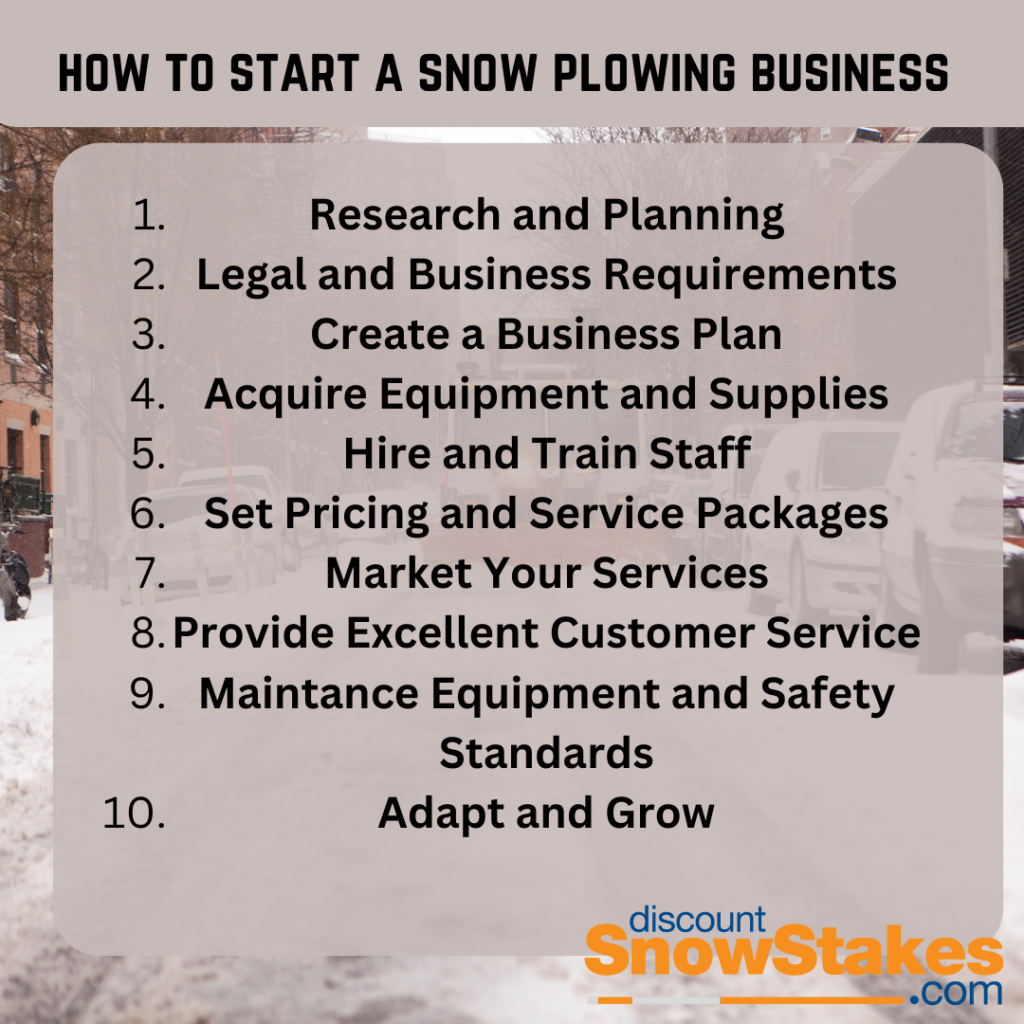Sure, starting a snowplowing business can be a lucrative venture, especially in areas with heavy snowfall during the winter months.

Here’s a step-by-step guide to help you learn how to start a snowplowing business:
- Research and Planning: Begin by researching the demand for snowplowing services in your area. Consider factors such as average snowfall, the number of competitors, and the size of the potential customer base. Evaluate the equipment you’ll need, such as snowplows, trucks, shovels, and safety gear.
- Legal and Business Requirements: Determine the legal requirements for starting a business in your area. This may include obtaining business licenses, permits, insurance (liability and vehicle insurance), and registering your business with the appropriate authorities. Consult with a legal advisor or accountant to ensure compliance with local regulations.
- Create a Business Plan: Develop a comprehensive business plan outlining your business goals, target market, pricing strategies, marketing plan, and financial projections. A well-thought-out business plan will guide your decision-making and help attract investors or secure financing if needed.
- Acquire Equipment and Supplies: Purchase or lease the necessary equipment and supplies for your snowplowing business. This may include snowplows, trucks or vehicles equipped for plowing, de-icing materials, shovels, safety gear, and maintenance tools. Consider both new and used equipment options based on your budget.
- Hire and Train Staff: If your business requires additional staff, such as drivers or technicians, hire and train them accordingly. Ensure they are familiar with operating snowplows safely, handling de-icing materials, and providing excellent customer service. Emphasize the importance of safety protocols to prevent accidents and injuries.
- Set Pricing and Service Packages: Determine your pricing structure based on factors like the size of the area to be plowed, frequency of service, and additional services offered (e.g., de-icing, sidewalk clearing). Consider offering seasonal contracts or one-time services based on customer preferences. Be competitive yet profitable with your pricing.
- Market Your Services: Develop a marketing strategy to promote your snowplowing business. Utilize online platforms such as social media, a professional website, and local business directories to reach potential customers. Consider traditional advertising methods like flyers, newspaper ads, and signage in strategic locations.
- Provide Excellent Customer Service: Focus on delivering exceptional customer service to build a loyal client base and generate positive word-of-mouth referrals. Respond promptly to inquiries, be reliable with service appointments, and address any customer concerns or feedback professionally. Consider offering discounts or incentives for repeat customers.
- Maintain Equipment and Safety Standards: Regularly maintain and inspect your equipment to ensure optimal performance and safety. Follow manufacturer guidelines for maintenance and repair tasks. Train your staff on safety protocols, including proper handling of equipment, use of protective gear, and driving in snowy conditions.
- Adapt and Grow: Stay adaptable and flexible to market changes and seasonal fluctuations in demand. Consider expanding your services to include other winter-related tasks, such as roof snow removal or salting driveways. Continuously monitor your business performance, gather feedback from customers, and make improvements to enhance efficiency and profitability.
Starting a snowplowing business requires careful planning, investment in equipment, effective marketing, and a commitment to delivering high-quality services. With dedication and a customer-centric approach, you can establish a successful and sustainable snowplowing venture.

